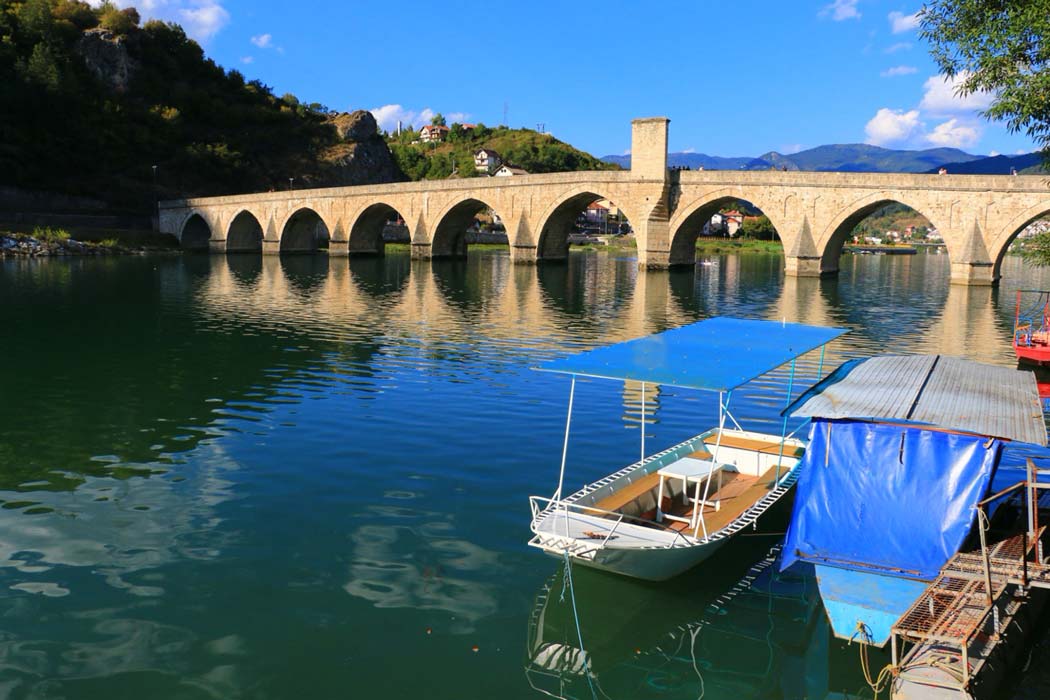Depth and Beauty: Grand Vizier’s Mehmed Pasa Sokolovic’s Bridge
The Mehmed Pasa Sokolovic Bridge in Visegrad, Bosnia and Herzegovina, is considered to be one of the most remarkable in the world. It is one of the most important heritage sites in Bosnia and a masterpiece of Ottoman architecture. The bridge has almost become one of the symbols the country and received UNESCO World Heritage Site listing in 2008.
The History of Mehmed Pasa Sokolovic Bridge
Bosnia and Herzegovina were part of the Ottoman Empire from 15 th to 20 th century and the Ottoman Turks left an indelible stamp on the country. The Visegrad Bridge was built by Grand Vizier Mehmed Paša Sokolović, the effective ruler of the Ottoman Empire during the reign of three Sultans, and was a native of the region.
The bridge was built across the River Drina between 1571 and 1578 to promote trade and commerce. Such construction works were often undertaken by Grand Viziers in their native province. The Ottoman architect, Koca Mi'mâr Sinân Âğâ, (or Mimar Sinan as he is known worldwide) was one of the greatest of his epoch and the bridge is considered to be his masterpiece.
The bridge had to be renovated on numerous occasions, mainly because of damage caused by floods. The bridge was also marred during WWI due to fighting between Serbia and Austro-Hungary, when three of its arches were shelled.
During WWII, when Germany occupied the region, a number of its arches were destroyed, but later restored. Although the bridge was not damaged during the Bosnian Civil War (1991-1995), it did need repair. As the Bosnian government was unable to pay for the restoration, the project was financed by the Turkish government.
- Exclusive: Discovery of New Prehistoric Underground Tunnels at Bosnian Pyramids
- Bridging the Living and the Dead: Scotland's 300-Year-Old Coffin Bridge
- Roman Emperor Caligula and the Floating Bridge of Baiae

Detail of one of the eleven arches of the Mehmed Pasa Sokolovic Bridge (caocao191 / Adobe Stock)
The bridge is located in the area of Bosnia that is ruled by the Republika Srpska, a Serbian majority area which has great autonomy under the terms of the Dayton Peace Accord which ended the Bosnian Civil War.
At present, there are concerns that a planned hydro-electric project may lead to a fall in the river levels and potentially damage the bridge and its beautiful natural environment. This bridge is often seen as one of the symbols of Bosnia and it was the subject of a classic novel by "The Bridge over the Drina" by the Nobel Laureate, Ivo Andrić.
One of The World’s Most Beautiful Bridges
The bridge is one of the greatest examples of Turkish monumental architecture and civil engineering. There are 11 curvilinear masonry arches designed in a classical Turkish style. The arches measure between 33 feet (11m) and 45 feet (15 m). The bridge is roughly 50 feet long (18 m). It rises slightly in the middle and has a descending ramp on the left bank.
Across the length of the bridge a profiled decorative stone cornice extends above the arches. In the middle of the bridge, the remains of a wooden gate can be seen, as well as two marble slabs with Arabic verses commemorating the construction of the bridge. A monumental stone that was set down for tired travelers can also be found in the middle of the bridge which offers a spectacular view of the Drina River.

A view from the other side of the Mehmed Pasa Sokolovic Bridge (sarenac77 /Adobe Stock)
This monument is protected by the Bosnian government and the property also consists of a buffer zone on each bank. While the bridge is considered to be an authentic Ottoman monument there is evidence of the influence of other cultures in its construction and repair. Some elements in the design of the bridge are similar to buildings from the Italian Renaissance.
Sinân was aware of the plans used by Michelangelo for the construction of the Dome of St Peter’s and was influenced by the great Florentine. Despite the recent restoration work much of the bridge is in poor condition.

The dome of St Peter’s Basilica, Vatican City (Fabianodp/Adobe Stock)
Travelling to the Mehmed Pasa Sokolovic Bridge
The bridge is in the city of Visegrad, which can easily be reached using public transport. It is possible to book a tour of the bridge in advance and no admittance fee is charged. If you prefer you can simply view the bridge from a local café or restaurant and while there, be sure to visit the many other attractions in the area.
Top image: Mehmed Pasa Sokolovic Bridge in Visegrad Source: Željko Radojko/Adobe Stock
By Ed Whelan
References
JAHIC, E. (2013). Ottoman architectural heritage in the Balkans. Turkish-Balkans Relations, 85
Sert, H., et al (2000), N. Evaluating the linear behavior of the historical Mehmed Pasa Sokolovic Bridge across the river Drina in Bosnia and Herzegovina
Available at: http://2016.istanbulbridgeconference.org/files/2016papers/ID_126.pdf
Vujović, V. (2018). Case Study-The Mehmed Pasa Sokolovic Bridge. Procedia Structural Integrity, 13, 489-495
Available at: https://thesis-journal.net/wp-content/uploads/2018/10/THESIS-55-93.pdf



















